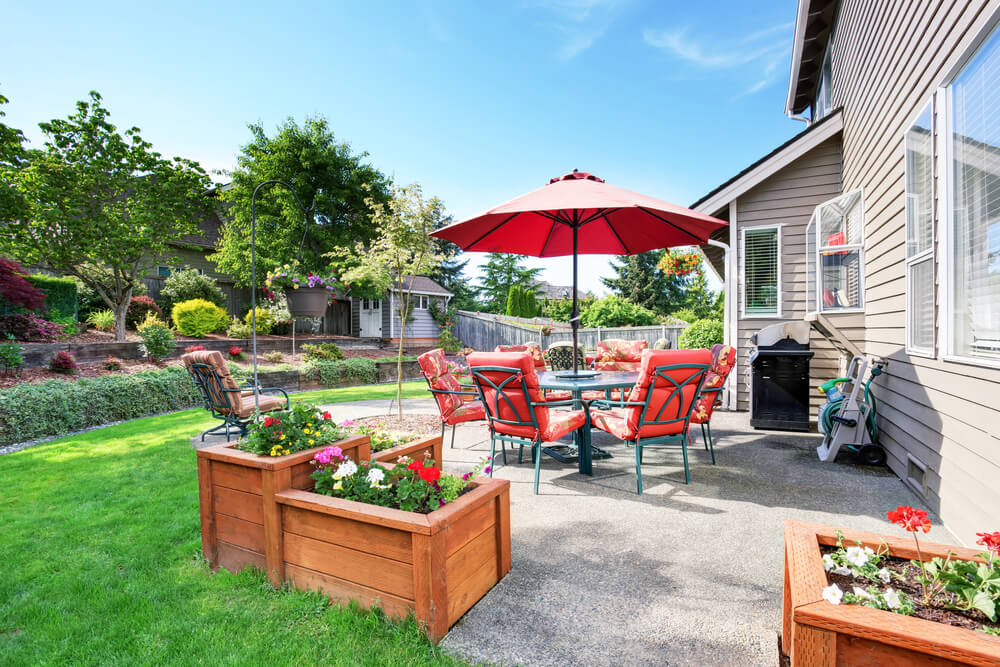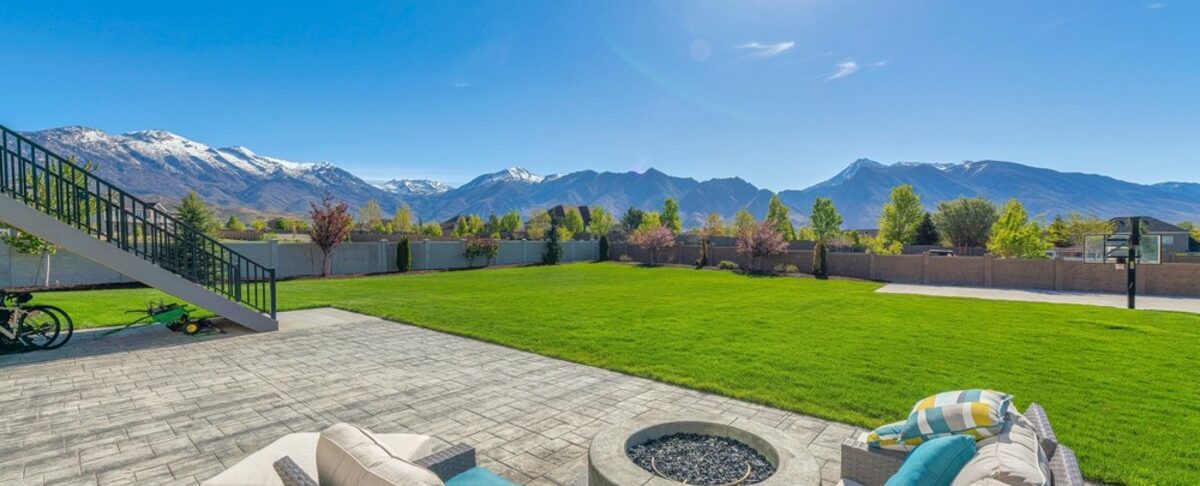Choosing the right size for your concrete patio is essential to create a functional and visually appealing outdoor space. A patio that’s too small can feel cramped, while one that’s too large may overwhelm your yard. By considering your intended use, backyard size, and budget, you can design a patio that fits your needs and enhances your outdoor living area. This guide breaks down the key factors to help you determine the perfect size for your patio.
Why Patio Size Is Important
Choosing the right size ensures your patio serves its purpose without compromising the overall balance of your backyard. A patio that’s too small can make activities feel cramped and uncomfortable, while an oversized one may dominate the yard, leaving little space for other outdoor features like gardens or play areas.
An appropriately sized patio blends functionality and aesthetics. It provides enough space for its intended use while maintaining proportion with the rest of your outdoor area. Getting this balance right ensures your patio becomes a comfortable, inviting extension of your home.
Define Your Patio’s Purpose
Start by considering how you’ll use the space. A patio’s purpose heavily influences its size. For instance, if you’re planning to use it as a small seating area for two, a patio of 50 to 60 square feet might suffice. However, if you envision hosting family gatherings with a dining table, grilling station, and lounging area, you’ll likely need 300 to 400 square feet.
Take your future needs into account as well. If you expect to add features like an outdoor kitchen, fire pit, or hot tub, it’s better to build slightly larger than your current needs dictate. This foresight can save you time and money down the line, as expanding an existing concrete patio can be a costly undertaking.
Consider the Size of Your Backyard
Your patio should fit well within the overall dimensions of your backyard. For smaller yards, it’s a good idea to limit the patio to 15–20% of the available space. This allows for a balanced layout with room for grass, gardens, or other outdoor features.
In larger yards, you have more flexibility, but the patio should still complement the surrounding area. Oversized patios can make even spacious backyards feel out of proportion. The goal is to create a harmonious design that enhances the outdoor environment without overwhelming it.
The shape of the patio can also affect how its size is perceived. Rectangular patios are traditional, but curved or irregular designs can make better use of available space and add visual interest.
Focus on Flow and Comfort
No matter how you intend to use the patio, comfort and flow are essential. You should have enough space to place furniture and move around easily. For example, leave at least three feet of clearance around tables, chairs, and walkways to prevent the space from feeling cramped.
Placement is another key consideration. A patio near your back door makes it easier to use for dining and entertaining, while a secluded patio farther into the yard creates a private retreat. Whichever location you choose, ensure it complements the flow of your backyard and integrates seamlessly with other features.
Plan Within Your Budget
Larger patios cost more in materials and labor, but that doesn’t mean you need to spend a fortune to create a functional and stylish outdoor space. If your budget is limited, focus on building a smaller patio with thoughtful features like decorative edges or stamped designs. These elements add character without significantly increasing costs.
For those with space constraints, built-in seating or multi-purpose furniture can maximize usability without expanding the patio’s footprint. These clever additions can make even a modestly sized patio feel spacious and functional.
Avoid Common Mistakes
One of the most common mistakes is underestimating the space needed for furniture and movement. Always measure your planned furnishings and account for extra room to move around comfortably. Another pitfall is ignoring drainage. Concrete patios must have a slight slope to allow water to run off, preventing pooling and potential damage.
Lastly, avoid overcrowding your patio. While it can be tempting to fill it with furniture and decor, a clutter-free space feels more welcoming and functional. A minimalist approach often creates the most inviting atmosphere.
Conclusion

Choosing the ideal concrete patio size for your backyard is about finding the right balance. By understanding your needs, considering the proportions of your yard, and planning for future changes, you can create a patio that enhances your outdoor living experience. With careful planning, your patio will be a versatile, functional, and beautiful part of your home for years to come.
If you’re ready to bring your patio vision to life, contact Richfield Concrete today. Our team of experts is here to help you create the perfect outdoor space tailored to your needs.





